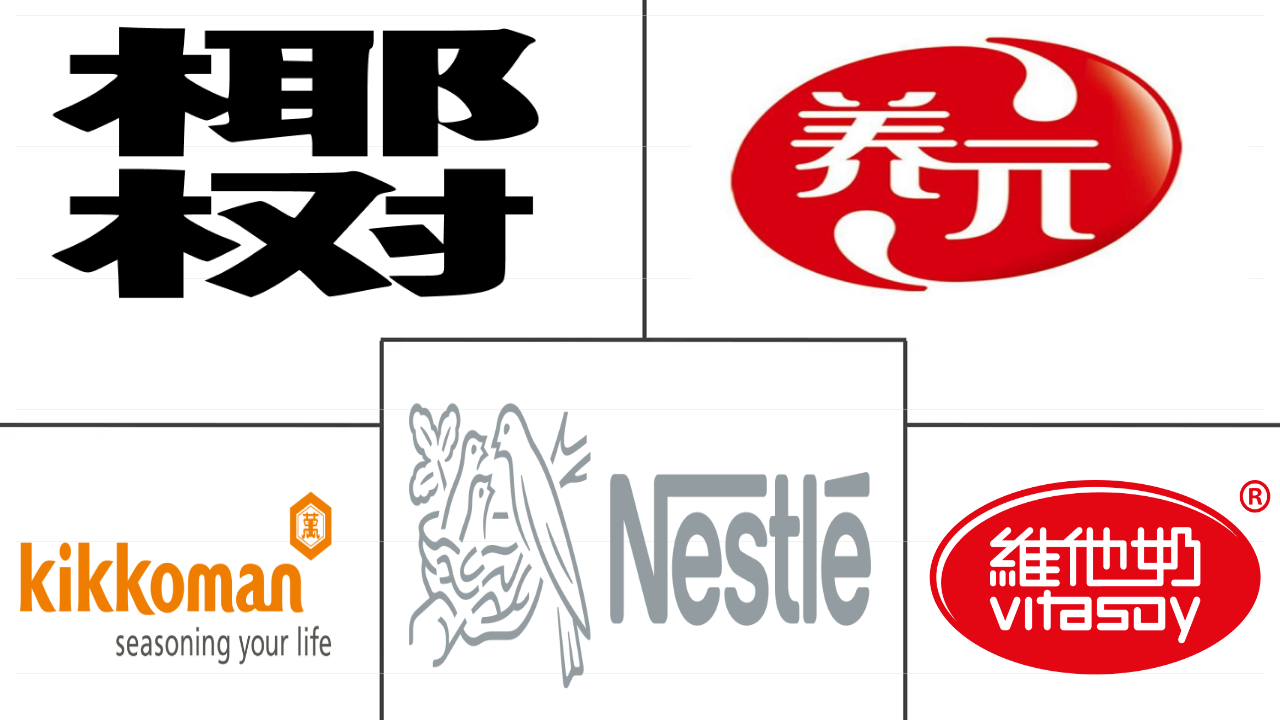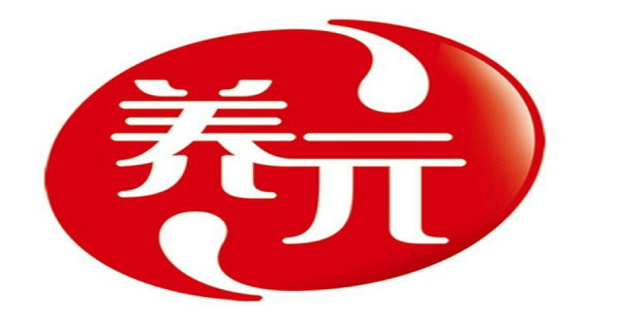Market Size of asia-pacific dairy alternatives Industry
| Icons | Lable | Value |
|---|---|---|
|
|
Study Period | 2017 - 2029 |
|
|
Market Size (2024) | USD 10.51 Billion |
|
|
Market Size (2029) | USD 15.61 Billion |
|
|
Largest Share by Distribution Channel | Off-Trade |
|
|
CAGR (2024 - 2029) | 8.23 % |
|
|
Largest Share by Country | China |
|
|
Market Concentration | Low |
Major Players |
||

|
||
|
*Disclaimer: Major Players sorted in no particular order |
Asia-Pacific Dairy Alternatives Market Analysis
The Asia-Pacific Dairy Alternatives Market size is estimated at 10.51 billion USD in 2024, and is expected to reach 15.61 billion USD by 2029, growing at a CAGR of 8.23% during the forecast period (2024-2029).
10.51 Billion
Market Size in 2024 (USD)
15.61 Billion
Market Size in 2029 (USD)
5.82 %
CAGR (2017-2023)
8.23 %
CAGR (2024-2029)
Largest Market by Category
90.11 %
value share, Non-Dairy Milk, 2023

The positive perception and high sensory acceptance towards plant-based milk have to broaden avenues for serving the needs of diverse populations that harbor concerns with dairy.
Largest Market by Country
49.09 %
value share, China, 2023
Whether optimizing their nutrition, pursuing new beverage trends, or experimenting with healthier lifestyles, Chinese consumers likely have plenty of alternative milk to choose from.
Fastest-growing Market by Category
31.30 %
Projected CAGR, Non-Dairy Cheese, 2024-2029
A steady increase in consumer awareness levels about consuming non-dairy dairy foods, and the impact of animal husbandry on the environment are the key factors driving the non-dairy cheese segment.
Fastest-growing Market by Country
12.51 %
Projected CAGR, New Zealand, 2024-2029
The segmental growth in New Zealand is influenced by the advent of functional products, and the emphasis on low-calorie, low-sugar, digestive products by the consumers in New Zealand.
Leading Market Player
16.37 %
market share, Hebei Yangyuan Zhihui Beverage Co. Ltd, 2022

The immense research and development activities by Hebei Yangyuan Zhihui Beverage Co Ltd in the market which is letting it innovate various products in the segment making it a leading player.
Strong penetration of organized retail channels is fueling the market growth
- The off-trade channel plays a major role in the region's sales of dairy alternative products. In the off-trade channels segment, supermarkets and hypermarkets are the largest distribution channels in the Asia-Pacific dairy alternatives market. The proximity factor of these channels, especially in large and developed cities, gives them an added advantage of influencing the consumer's decision to purchase among the large variety of products available in the market. In 2022, the supermarkets and hypermarkets sub-segment accounted for 66.7% of the value share.
- The region does not have a considerable market for on-trade channels and is in the nascent stage. Consumers prefer dairy alternatives at home and are less likely to consume from a restaurant or foodservice outlet. Plant-based milk and non-dairy butter are increasing in popularity, and some regional restaurants use plant-based milk, particularly as an ingredient option in cocktails, smoothies, coffees, and espresso-based drinks. Thus, the sales value of plant-based milk through on-trade channels increased by 4.5% in 2022 compared to 2021.
- Plant-based milk accounted for the majority of share in off-trade channels among all dairy alternative products. In 2022, plant-based milk accounted for more than 85% of the value share.
- Online channel is expected to be the fastest-growing distribution channel in the off-trade segment. It is projected to register a Y-o-Y growth value of 4.6% during 2023-2025. Convenience is the primary motivation for shoppers who have transitioned to shopping for groceries online.
China, Japan, and Australia exhibit significant dairy alternative consumption compared to other Asian countries
- The rise in the vegan population as a result of the rising importance of plant-based nutrition drives the demand for dairy alternatives in the region. China, Japan, and Australia exhibit significant dairy alternative consumption compared to other Asian countries. In 2023, the countries collectively held a 79.77% share of the overall dairy alternative consumption in the region. Rising consumer interest in alternative protein is the key factor driving the consumption of dairy alternatives in China. The penetration of global brands through strategic partnerships with supermarkets and hypermarkets is influencing Chinese consumers to opt for alternative dairy milk and cheese.
- High consumer awareness about plant-based nutrition and favorable macroeconomic environments are the key factors shaping the Australian dairy alternative industry. Non-dairy butter and plant-based milk are essential products preferred by millennial consumers in Australia. In 2022, plant-based milk had an 84.76% share of the overall dairy alternatives consumed in Australia. Australians consumed around half a metric cup of milk substitutes every week. Almond and soy milk are becoming more popular in Australia. Over 50% of Australians aged two and older do not get enough calcium and other minerals, which is attracting customers toward plant milk with added nutrition.
- India is the fastest-growing country with an increasing number of vegetarian customers. In 2021, India had the world's third-highest number of participants, with around 60,000 people joining the campaign, Veganuary, an international organization. The sales value of dairy alternatives is estimated to record a CAGR of 9.83% during the forecast period.
Asia-Pacific Dairy Alternatives Industry Segmentation
Non-Dairy Butter, Non-Dairy Cheese, Non-Dairy Ice Cream, Non-Dairy Milk, Non-Dairy Yogurt are covered as segments by Category. Off-Trade, On-Trade are covered as segments by Distribution Channel. Australia, China, India, Indonesia, Japan, Malaysia, New Zealand, Pakistan, South Korea are covered as segments by Country.
- The off-trade channel plays a major role in the region's sales of dairy alternative products. In the off-trade channels segment, supermarkets and hypermarkets are the largest distribution channels in the Asia-Pacific dairy alternatives market. The proximity factor of these channels, especially in large and developed cities, gives them an added advantage of influencing the consumer's decision to purchase among the large variety of products available in the market. In 2022, the supermarkets and hypermarkets sub-segment accounted for 66.7% of the value share.
- The region does not have a considerable market for on-trade channels and is in the nascent stage. Consumers prefer dairy alternatives at home and are less likely to consume from a restaurant or foodservice outlet. Plant-based milk and non-dairy butter are increasing in popularity, and some regional restaurants use plant-based milk, particularly as an ingredient option in cocktails, smoothies, coffees, and espresso-based drinks. Thus, the sales value of plant-based milk through on-trade channels increased by 4.5% in 2022 compared to 2021.
- Plant-based milk accounted for the majority of share in off-trade channels among all dairy alternative products. In 2022, plant-based milk accounted for more than 85% of the value share.
- Online channel is expected to be the fastest-growing distribution channel in the off-trade segment. It is projected to register a Y-o-Y growth value of 4.6% during 2023-2025. Convenience is the primary motivation for shoppers who have transitioned to shopping for groceries online.
| Category | |||||||||||
| Non-Dairy Butter | |||||||||||
| Non-Dairy Cheese | |||||||||||
| Non-Dairy Ice Cream | |||||||||||
| |||||||||||
| Non-Dairy Yogurt |
| Distribution Channel | |||||||
| |||||||
| On-Trade |
| Country | |
| Australia | |
| China | |
| India | |
| Indonesia | |
| Japan | |
| Malaysia | |
| New Zealand | |
| Pakistan | |
| South Korea | |
| Rest of Asia Pacific |
Asia-Pacific Dairy Alternatives Market Size Summary
The Asia-Pacific dairy alternatives market is experiencing significant growth, driven by increasing consumer interest in plant-based nutrition and the rising vegan population. The market is characterized by a strong preference for off-trade channels, particularly supermarkets and hypermarkets, which dominate the distribution landscape due to their accessibility in urban areas. Plant-based milk, especially soy and almond varieties, holds a substantial share of the market, reflecting the region's cultural preferences and dietary needs. The online shopping channel is emerging as the fastest-growing distribution method, catering to consumers' demand for convenience. The market is further bolstered by the growing lactose-intolerant population and the popularity of non-dairy butter, as consumers seek healthier and more sustainable dietary options.
China, Japan, and Australia are at the forefront of dairy alternative consumption in the region, with China leading in plant-based milk consumption due to its traditional use of soy products. Australia shows a strong preference for plant-based milk and non-dairy butter, particularly among millennials, driven by health concerns and nutritional needs. India is witnessing rapid growth in dairy alternative consumption, fueled by its large vegetarian population. The market is fragmented, with major players like Coconut Palm Group, Hebei Yangyuan Zhihui Beverage, Kikkoman, Nestlé, and Vitasoy International Holdings actively expanding their product offerings and market presence. These companies are responding to the increasing demand for dairy alternatives by introducing new product lines and expanding their business operations.
Asia-Pacific Dairy Alternatives Market Size - Table of Contents
-
1. MARKET SEGMENTATION (includes market size in Value in USD and Volume, Forecasts up to 2029 and analysis of growth prospects)
-
1.1 Category
-
1.1.1 Non-Dairy Butter
-
1.1.2 Non-Dairy Cheese
-
1.1.3 Non-Dairy Ice Cream
-
1.1.4 Non-Dairy Milk
-
1.1.4.1 By Product Type
-
1.1.4.1.1 Almond Milk
-
1.1.4.1.2 Cashew Milk
-
1.1.4.1.3 Coconut Milk
-
1.1.4.1.4 Hazelnut Milk
-
1.1.4.1.5 Hemp Milk
-
1.1.4.1.6 Oat Milk
-
1.1.4.1.7 Soy Milk
-
-
-
1.1.5 Non-Dairy Yogurt
-
-
1.2 Distribution Channel
-
1.2.1 Off-Trade
-
1.2.1.1 Convenience Stores
-
1.2.1.2 Online Retail
-
1.2.1.3 Specialist Retailers
-
1.2.1.4 Supermarkets and Hypermarkets
-
1.2.1.5 Others (Warehouse clubs, gas stations, etc.)
-
-
1.2.2 On-Trade
-
-
1.3 Country
-
1.3.1 Australia
-
1.3.2 China
-
1.3.3 India
-
1.3.4 Indonesia
-
1.3.5 Japan
-
1.3.6 Malaysia
-
1.3.7 New Zealand
-
1.3.8 Pakistan
-
1.3.9 South Korea
-
1.3.10 Rest of Asia Pacific
-
-
Asia-Pacific Dairy Alternatives Market Size FAQs
How big is the Asia-Pacific Dairy Alternatives Market?
The Asia-Pacific Dairy Alternatives Market size is expected to reach USD 10.51 billion in 2024 and grow at a CAGR of 8.23% to reach USD 15.61 billion by 2029.
What is the current Asia-Pacific Dairy Alternatives Market size?
In 2024, the Asia-Pacific Dairy Alternatives Market size is expected to reach USD 10.51 billion.

